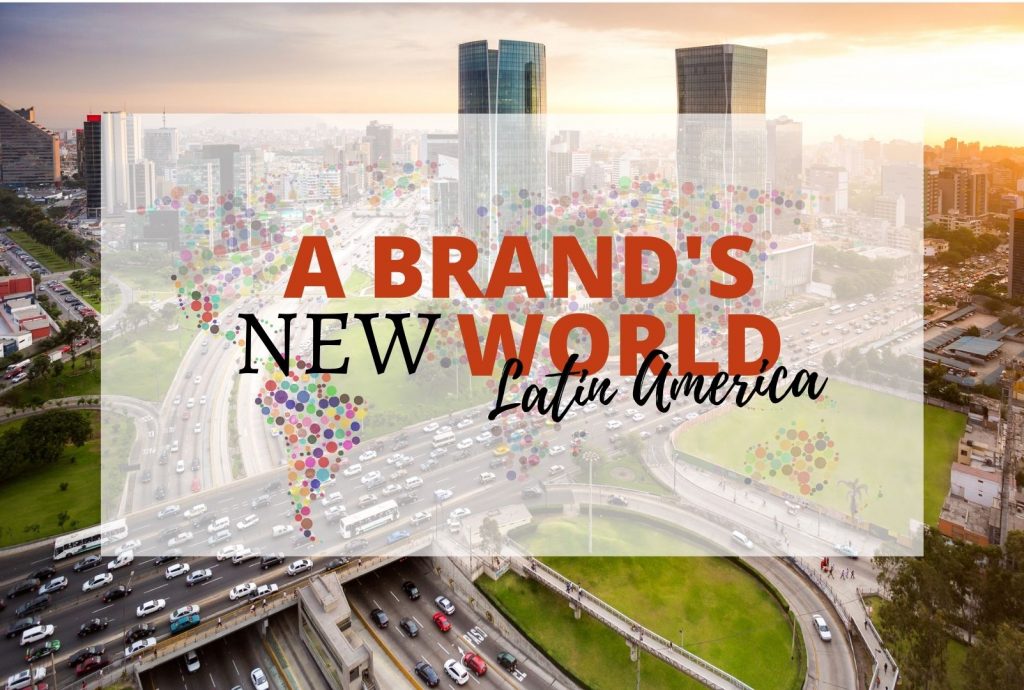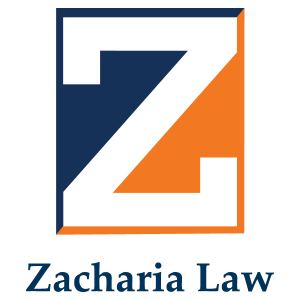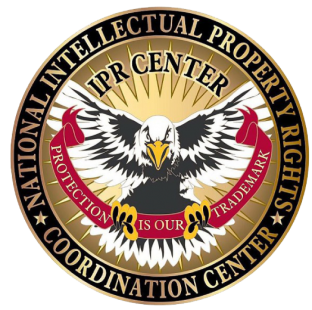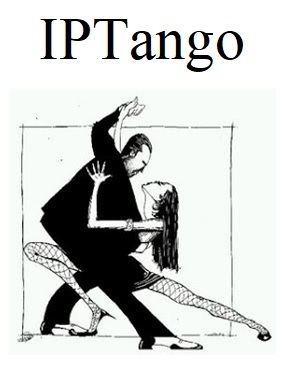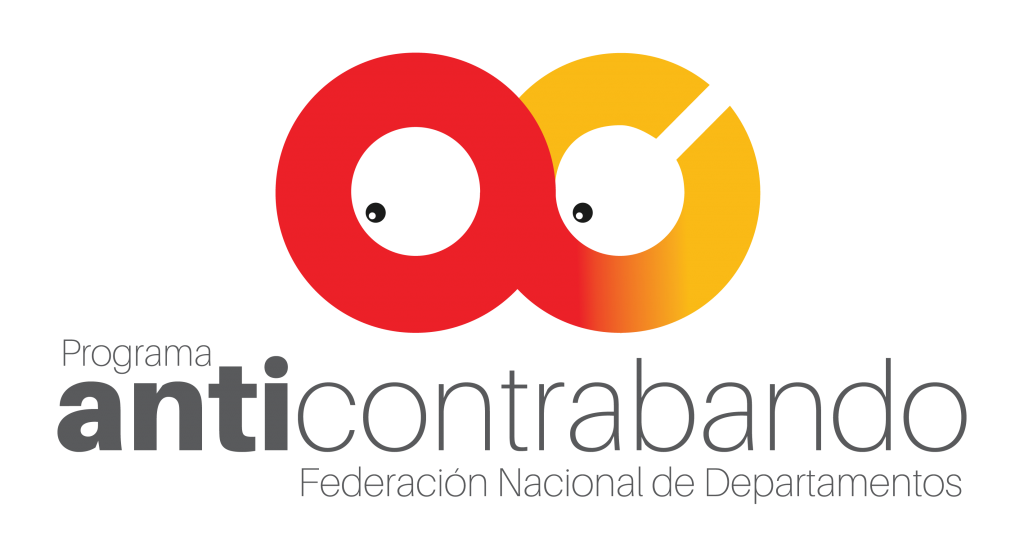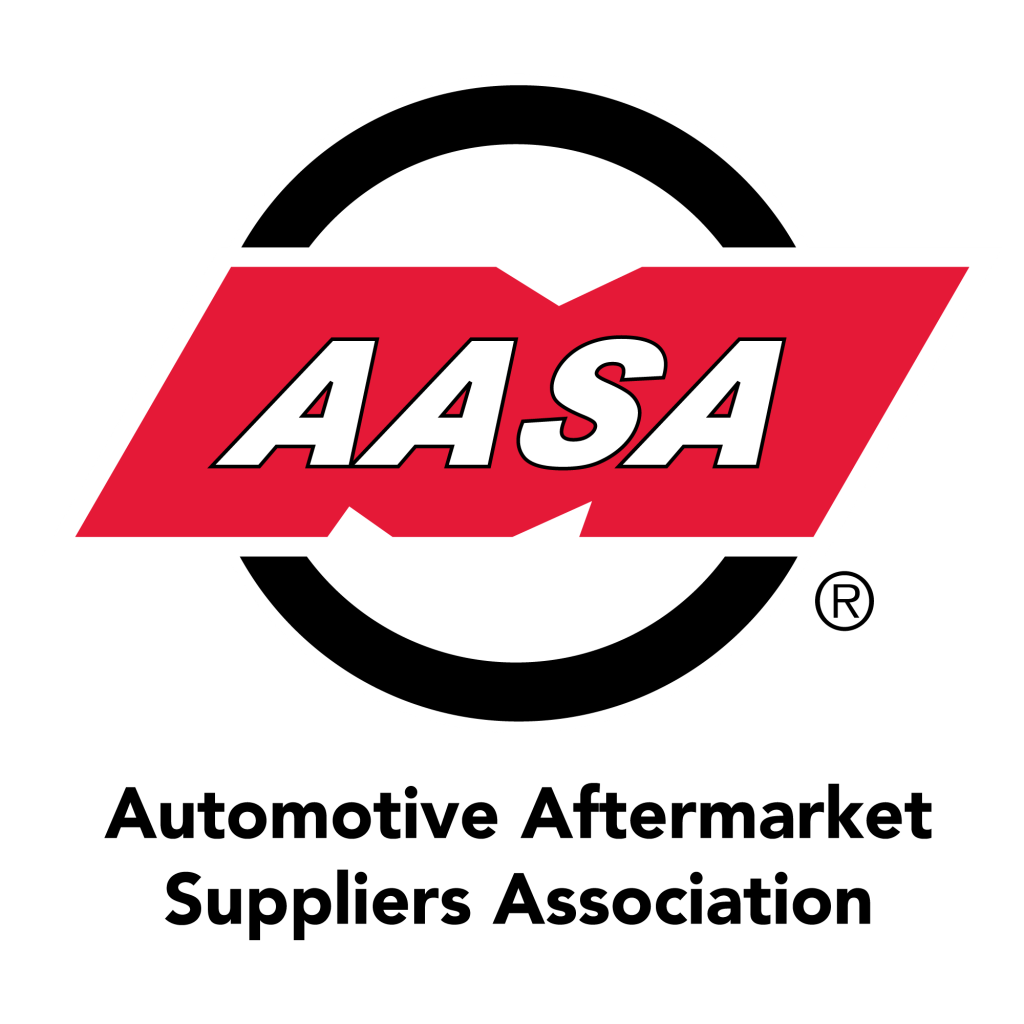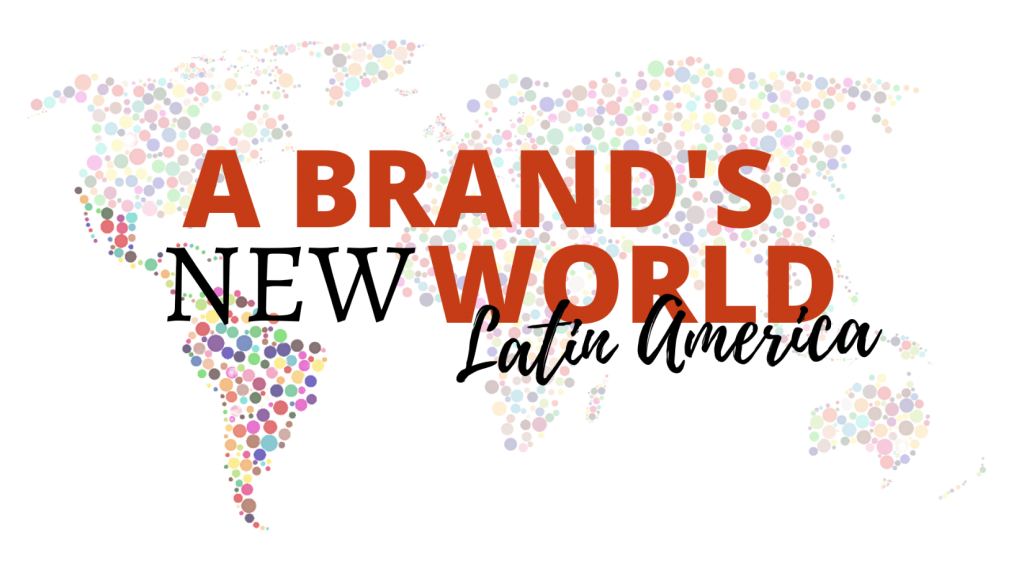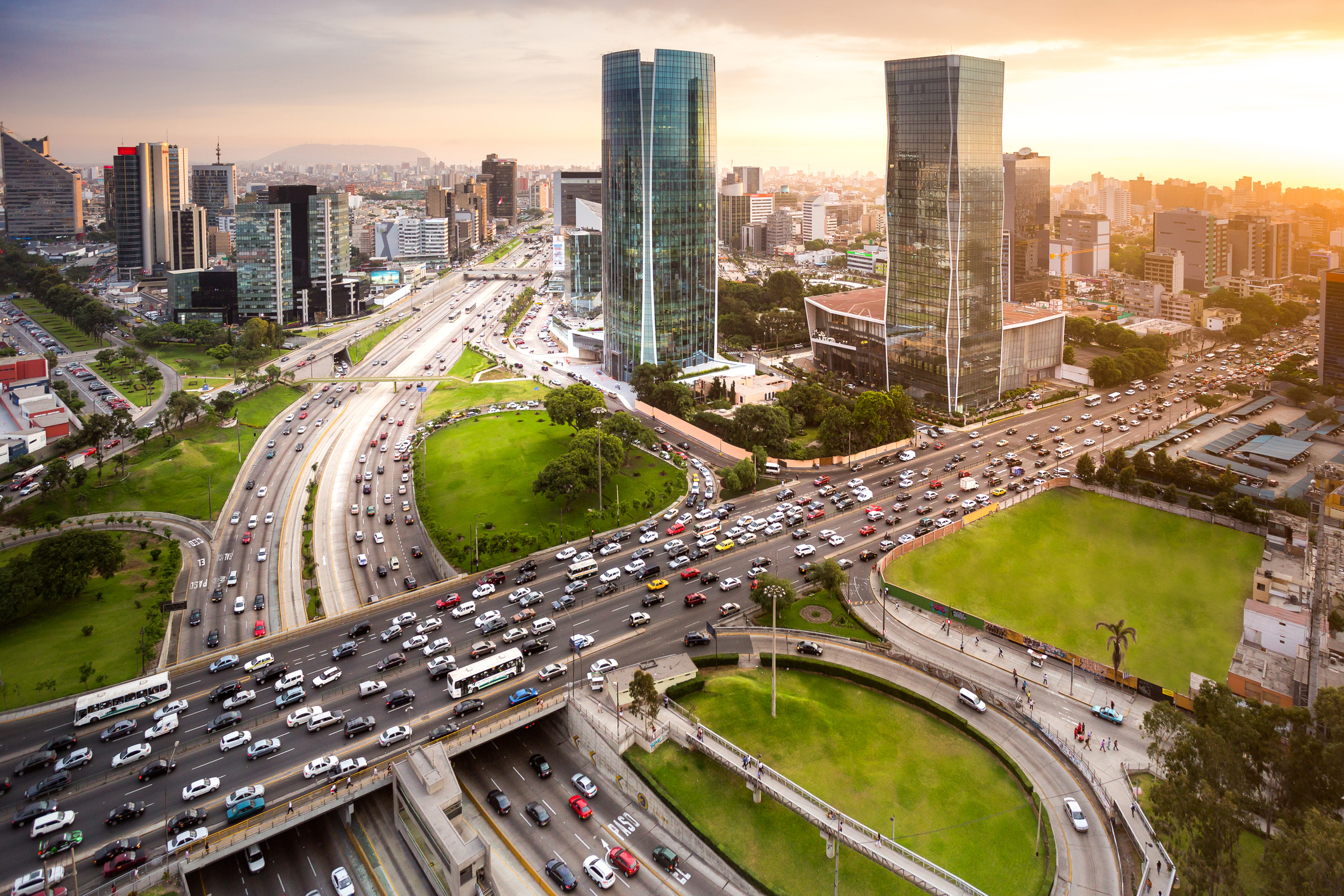
A Brand’s New World-Latin America Conference Report
PMI and A-CAPP Center, 2021
A LETTER FROM
A-CAPP ASSISTANT
DIRECTOR OF EDUCATION
AND OUTREACH,
Kari Kammel
The Center for Anti-Counterfeiting and Product Protection (A-CAPP), at Michigan State University, is committed to combatting trademark counterfeiting and ensuring that brand owners have the information and support they need to navigate the changing landscape.
With the Brand’s New World conference, the A-CAPP Center aimed to provide solutions to brand protection challenges through thought leadership programming, bring a diverse group together to discuss core illicit trade issues and for information sharing.
According to Organisation for Economic Co-operation and Development (OECD) figures, the volume of international trade in counterfeit and pirated products amounts to 464 billion USD, or 2.5 percent of global trade.[1] Counterfeiting is a global phenomenon that originates in every corner of the world and impacts all industries. Offenders who engage in counterfeiting and piracy do so solely for profit––it makes no difference what they traffic as long as it is profitable. While the problem is global, the response is not. Some countries have the resources and the focus, while others lack commitment and funding.
Our 2020 virtual conference series, A Brand’s New World, addressed issues of brand protection and counterfeiting from a U.S. perspective. Our new series in 2021 focused on counterfeiting and piracy in Latin America (LATAM).. Given the differences in Latin American countries’ sociopolitical environments, economic positions, national security threats, and government priorities, understanding how counterfeiting cases are addressed is critical.
The virtual conference, with six panels composed of regional experts covering topics ranging from how to work with local authorities to the overlap of counterfeiting and organized crime, aimed to discuss what brand owners, lawyers, and government entities face on a daily basis and potential solutions.
To minimize counterfeits in the future, we must thoroughly understand the issue at hand across multiple regions and take into account the various players involved, including brand owners, law enforcement, government entities, and others. This summary collects highlights from each of the panels, including the issues, challenges, and best practices discussed with recommendations.
We hope you find the information useful and please let us know if you would like to discuss further.
Sincerely,
Kari Kammel
Assistant Director of Education and Outreach
WORKING WITH LOCAL AUTHORITIES TO ADDRESS COUNTERFEITING:
Strategies for Brands
ISSUES
Latin America has serious security issues such as terrorism, drug trafficking, etc. However, sometimes there is a lack of understanding in the region around counterfeit issues. Authorities often do not realize that behind smaller crimes are larger, more complex crimes operated by criminal organizations that use the falsification of goods to fund their nefarious activities.
In each country where counterfeiters are discovered, actions ranging from cease-and-desist letters to criminal prosecution or intellectual property (IP) theft litigation differ. Brand owners must determine which entity to contact, what policies and laws are in place to protect brands to combat counterfeiting and piracy, and most importantly, which avenue will yield the best results; there is not a one-size-fits-all solution.
There are very few multidisciplinary government entities that work together to combat counterfeiting. The authorities in most LATAM countries work alone. Brand owners must approach each authority per country. Most of the time, brands are referred to several agencies before finding one that can handle these crimes, resulting in costly time delays where cases are often forgotten or buried by pressing incidents.
CHALLENGES
Counterfeit trainings are typically attended by law enforcement officers, customs agents, and tax officials, but almost never by judges––who, at the end of the day, are in charge of sanctioning criminal behavior. Thus, this lack of training and understanding often leads to impunity.
The focus on counterfeit items across each LATAM country varies. Some countries with expert intellectual property authorities may be the gold standard in the region for anti-counterfeiting actions, others appear to be lagging behind with penal systems that are either outdated or new, and as a result, some law enforcement agents are still learning how to handle evidence, prosecute these actions, and so on.
BEST PRACTICES AND RECOMMENDATIONS
It is critical to recognize that operational authorities in the region have the best intentions and will support counterfeiting actions; however, partnerships with brand owners are essential to provide the expertise and knowledge to help dismantle criminal networks. Additionally, brand owners can help broaden agents’ knowledge of counterfeiting and supply chain vulnerabilities; strengthen container and truck profiling; and prepare agents for future incidents. However, training is only the beginning––the most important aspect is to accompany the authority in the destruction of these goods as well as following the legal investigation to prosecution.
Local authorities frequently face difficulties in transporting or storing illegal goods, having evidence contaminated due to a lack of storing knowledge, and many legal cases end up failing because of these evidence flaws. Brand owners should step in to assist in the transport and storage of goods so that nothing stands in the way when the case is brought before the judges. Additionally, brand owners should collaborate to develop a standardized industry approach.

The most important aspect is to accompany law enforcement authorities in the destruction of illicit goods and to support the legal investigation and prosecution of the case.

Lack of understanding is associated with a lack of training for all in the law enforcement value chain to reduce barriers for law enforcement prosecuting these counterfeit cases.

Information sharing, and public-private collaborations are critical among all involved in brand protection.
FREE TRADE ZONES AND BRAND PROTECTION:
Best Practices
ISSUES
Over the last decade, the number of Free Trade Zones (FTZs) have dramatically increased; there are now approximately 3,500 FTZs worldwide. While FTZs are a catalyst for trade, they are also a source of uncertainty and disdain. The benefits of FTZs, such as foreign direct investment and economic growth, are currently outweighed by the illicit activities that take place within and between these zones, such as trade-based money laundering, funneling terrorist financing, facilitating movement of the wide-ranging illicit economies, and other activities.
One inherent tension that brand owners face when dealing with counterfeits in these zones is the ongoing dispute over jurisdiction between customs and FTZ administrations per country. There is uncertainty about how much customs can do without a raid warrant in a FTZ.
When it comes to prosecuting counterfeiters, the issue of jurisdiction becomes even more apparent. When counterfeit litigation arrives before a court, three requirements must be met in order for the process to proceed: proof of the counterfeit product, the exact location of these counterfeit products, and the identity of the responsible party. Outside of FTZs, counterfeit litigation is complicated; within FTZs, it is even more complex.
The entry of customs officials into a FTZ is difficult. Employees, security guards, and others may pushback regarding entry. And access to the warehouse may be restricted. In addition to jurisdictional issues, the complexity of intellectual property legislation varies by country; FTZs do not have uniformed regulations.
While agencies attempt to understand the complex dynamics of FTZs, customs, the judiciary, and other institutions in various countries to determine entry and seizure of illicit goods; organized criminal actors exploit these gaps to move illicit goods, launder money, and more.
Thus, there is a lack of FTZ due diligence in terms of product flow in and out of FTZs, as well as a general lack of political will to curb illicit trade. Additionally, judges often attempt to protect FTZs as they are often in impoverished areas and action could disrupt normal economic activity.
CHALLENGES
With so many FTZs established around the world, each zone has a different set of objectives and goals depending on the country, and while it might be the minority of FTZs that do not adhere to counterfeit measures, this casts a negative light on all FTZs. There is a need to isolate these FTZs and assist them with adhering to best practices and cooperating with customs, law enforcement agencies, and other government agencies.
Counterfeiting and illicit trade in FTZs necessitates collaboration among regulatory bodies at the regional and international levels and requires public-private partnerships. Brand owners are concerned that FTZs will continue to undermine brand integrity by flooding the market with less-than-desirable goods, crowding out legitimate market actors committed to the research and development of exemplar and quality goods. FTZs should operate with less bureaucracy while prioritizing intellectual property (IP) protection.
Illicit goods capable of causing harm to consumers may be flowing out of these FTZs, including tobacco, electronics, food, and pharmaceuticals; illicit goods do not meet government regulatory standards or the quality controls set by legitimate brand owners—posing a threat to customers.
BEST PRACTICES AND RECOMMENDATIONS
The issues of FTZs should be recognized as an impediment to legitimate businesses and solutions must be kept on the global agenda. Misuse of FTZs involves multiple actors. Activities will continue as long as there is a profit for nefarious actors until enhanced measures are introduced. A concerted political effort from all sectors is required, including global solutions and partnerships; governments, the private sector, customs agencies, and law enforcement must continue to look for synergies.
At the agency level, customs authorities’ awareness of the importance of FTZs in the global economy and their potential impact on trade and the illicit economy should be heightened because of their central role in cross-border commerce. The predominant perception among customs officials is that FTZs are countries within countries and therefore unreachable— highlighting the need for improved legislation and access to these zones.
Implementing and adopting the OECD Guidelines provide customs officials a clear set of enforcement procedures in FTZs and would strengthen the integrity for brand owners reliant on international trade. There are six critical factors within the Guidelines that are important for brand owners––these include addressing the issue at various levels of government with international cooperation.
Allow customs and law enforcement agencies in the jurisdiction where they are established unrestricted access to conduct enforcement checks on operators to ensure that local law is being followed.
Mandate that economic operators operating in the FTZ are required to provide detailed digital records to the corresponding FTZ authority, customs authorities, and/or any other lawful public enforcement body.
Keep detailed digital records of all shipments of goods entering and leaving the FTZ, as well as all goods and services produced within to know what each FTZ holds at any given time.
Encourage international cooperation in the exchange of law enforcement information, as well as consultation for specific cases of FTZ misuse related to illicit trade.
Prohibit cash payments for any commercial or financial for a transaction active in the FTZ that occurs within or originates within the FTZ.
Increase awareness across the business value chain, including shipping lines, logistics companies, shipping agents, custom brokers, and freight forwarders, of the risks associated with FTZs.[2]
Work to improve FTZs is currently underway. The World Free Zones launched the Safe Zone program as a result of several years of discussions with the OECD Task Force on Countering Illicit Trade (TF-CIT). As a result, the OECD Code of Conduct for Clean Free Trade Zones was adopted as the foundation of the Safe Zone program. Thus, the OECD Safe Zone program provides solid frameworks for FTZs to implement transparent governance tools that adhere to broader international standards set by the World Trade Organization and the World Customs Organization. The desired outcome is a free zone that operates in full compliance with international laws and regulations.[3]
Despite the fact that positive steps have been taken to align FTZs to comply with the international law and coordinate actions with local authorities and customs, change and transparency must be encouraged to eradicate illicit trade.

FTZs have many advantages, but because of their lax regulation, they have become hotspots for counterfeiting.

Jurisdiction and information access must be clearly defined to combat counterfeiting in an ever-expanding FTZ international market.

More consistency across all FTZs is needed even after implementing the OECD Safe Zone program guidelines.
E-COMMERCE AND COUNTERFEITS:
Transnational Cooperation
ISSUES
Latin America has experienced the greatest growth in e-commerce of any region on the world as more people stayed home with less access in-person commerce destinations. Counterfeiters also shifted and accelerated to match consumption as e-commerce platforms make it easier to reach consumers all over the world, presenting brand owners with a new set of issues.
A large portion of Latin America’s population is low-income, and consumers are influenced by low prices for otherwise expensive goods––either buying fakes knowingly or believing they are purchasing the real item at low prices. More consumer education will elevate the awareness on the dangers counterfeit products pose. Counterfeiters use misspellings of legitimate brand names in their listings, causing confusion about the product’s origin and source.
Another issue that has arisen as a result of e-commerce centers around counterfeit products shipped in small parcels. Customs and law enforcement must now inspect and be wary of the numerous amount of small parcels in addition to large containers to prevent counterfeiting.
Customs and law enforcement deal with an overwhelming amount of cases, including those involving the trafficking of weapons, drugs, wildlife, and even humans. In some LATAM countries, where resources are devoted to perilous crimes, intellectual property crimes are likely not a top priority; in these cases, it is up to brand owners to educate officials on the importance of IP and how to best identify these products.
CHALLENGES
With overwhelming increase in consumer demand on e-commerce, counterfeiters have more opportunities to sell their products online with a wider global reach and greater anonymity. The vastness of the internet across various online channels is an unrealistic expectancy put on brand owners.
As IP is often a lower priority for law enforcement, violators face light penalties. Additionally, the view that IP crimes are a victimless crime, and the reality, in which consumers’ security, national security, economies, and businesses are all impacted by a lack of priority given to IP protection, is one that consumers and sellers must be aware of.
While there is a strong need for collaboration between brand owners and online platforms, many platforms are unwilling to share information with brands. For example, if a brand owner receives reports of a listing selling a counterfeit good with the unauthorized use of their logo, or is discovered to be an unverified seller, they may request that the platform disclose information on the seller. While some platforms will gladly provide what they can, most e-commerce platforms will have limitations due to data privacy concerns.
Action against counterfeits online does not take a preventative or anticipatory approach, but rather one in which each new illicit seller is tracked down and prosecuted. There is a need to transition investigations from the online realm to on-the-ground investigations. It is not enough to remove listings from the internet—but to also locate the actual source. To do so, brand owners must first understand the legal system in which they operate. Understanding legal processes such as court case filings, the dissemination of cease-and-desist letters, and proper collaboration with law enforcement are critical for this process.
BEST PRACTICES AND RECOMMENDATIONS
Counterfeiting can be addressed in a variety of ways, as even businesses in the same industry approach the issue differently. A singular, industry-wide approach to educate customs agencies, legislators, prosecutors, and law enforcement in various countries about counterfeit issues would help increase enforcement of online brand protection, especially if shared with the appropriate individuals in the criminal justice, legislative, and e-commerce law and policymaking systems.
Inadequate or insufficient intellectual property enforcement and sanctioning legislation, combined with a view of IP violations as victimless crimes, results in few, if any, penalties for violators. As a result, if brand owners want to see a change in the way IP violations are committed, both the public and private sectors must play an active role in combating counterfeiting. Capacity building is a critical component of this much-needed change both for sellers and consumers, and ultimately for the agencies dealing with counterfeit issues.
Educating both sellers about intellectual property rights and the dos and don’ts of online listings, and consumers about which channels to buy items online and how to distinguish a legitimate listing from an infringing listing, are fundamental steps in this process. When illicit transactions do occur, it is critical that law enforcement is properly trained to handle the crime. Because brand owners are familiar with their products and can distinguish their products from counterfeits, they are uniquely suited to increase the sophistication of law enforcement trainings so that officers can conduct thorough investigations and assist in knowledge transfers.
Transitioning investigations from online to on-the-ground is also necessary. A “where”-based approach would be beneficial, as involved parties consider the regional and jurisdictional differences that influence the direction of IP rights investigation and enforcement. The legal system and counterfeiters may differ depending on location and having this lead investigations can provide brand owners with a better understanding of the playing field, the actors, and the game rules.
Transparency and data sharing between brands and online platforms is essential in producing better investigations, capacity building, and consolidation of industry practices. Online platforms store data pertaining to infringing sellers. If this data was disclosed to brands, brands could better understand the scope of online counterfeiting and respond appropriately. Platforms should also allow brands to request information on sellers in online marketplaces if they notice a potentially infringing listing––without informing the seller that this information is being shared. Further, platforms should allow brands to share a ‘briefing’ on the platform that is visible to both consumers and sellers. Such a briefing should discern legitimate and illegitimate products, provide contact information if a consumer sees a potentially infringing listing, and any other information that may help consumers distinguish counterfeits from legitimate products.
As brands and online platforms adopt these strategies, more research on consumer awareness and online counterfeiting will allow brands and platforms to better understand how to engage with consumers in anti-counterfeiting efforts.

Brand owners are responsible to cultivate the relationships with and educate law enforcement officials on the importance of IP and how to best identify these products.

Education on IP rights and infringement is needed, as well as what constitutes an infringing listing.

Information sharing and collaboration is critical with all parties involved in the movement of legitimate and counterfeit products.
OVERLAP OF COUNTERFEITING AND LINKS TO ORGANIZED CRIME
ISSUES
Counterfeiting is a phenomenon that can occur as a result of state decisions, even if these decisions are executed with good intentions. Tariffs used for protectionist purposes, whether for collection or in the name of consumer protection. When tariffs are used to artificially raise the costs of certain products, they can create indirect incentives for those consolidating illegal markets such as smuggling and counterfeiting. It is also necessary to consider the state’s shortcomings, both normative and operational––if there are no frameworks, regulations, or mechanisms in place to effectively and efficiently protect intellectual property rights, such activities become common, and the risk for counterfeiters is low if they are ever sanctioned.
Many national and international drug trafficking organizations benefit from counterfeiting, giving rise to other illegal activities and an entire illicit economic system causing harm to the state, local community, and licit commerce of authentic brands.
The triple border connecting Paraguay, Brazil, and Argentina––is a crossroads for illegal and legal trade. The zone is heavily criticized for having a high level of illegal commercial activity and for serving as a hotspot for money laundering from narco cartels and illegal commerce, with some having ties to Hezbollah, Hamas, and other criminal organizations. Due to a lack of control and transparency, the border is highly permeable and a preferred destination of choice by international criminal actors converging around a common purpose to profit and move illicit items.
CHALLENGES
With an insubstantial and unstable government, enforcement of regulations and restrictions of merchandise entering a border is often not the first priority. Additionally, criminal organizations collaborate to command legitimacy and recognition from the community, allowing nefarious groups to overwhelm authorities and gain territorial control.
Brand owners must identify the vulnerable entry points and supply chain disruptions across the region and increase information sharing across regions and governments. The lack of opt-in participation by countries is due to a lack of knowledge around IP issues or countries lack the needed technologies to identify illicit products.
Additionally, especially during and post-COVID, e-commerce and digital marketplaces have allowed belligerent actors to grow scams, fraud, and other criminal activity. Federal agencies around the world, including those in the United States and Europe, must devote resources to identify and combat illicit marketplaces and tools as smaller counterfeit operations often lead to larger criminal activity by criminal or terrorist organizations.
BEST PRACTICES AND RECOMMENDATIONS
Some countries have created a process for anonymous complaints to report information about illegal commerce. It is necessary to raise awareness of this process and encourage the reporting of counterfeit items; if customers are aware of the consequences of an illicit purchases and armed with the tools to easily identify an illegal item, they will feel compelled to avoid and report illegal vendors.
First, to fight converging crimes, systemic wide-spread corruption must be addressed. Criminal organizations have learned to violate, penetrate, and infiltrate officials in public and private companies, including government representatives responsible for overseeing state regulations.
Second, judicious, sustained, systematic, and robust intelligence will help identify illicit criminal structures and locations to dismantle illicit networks and actors. Additionally, pinpointing links and interconnections will help law enforcement and brands weaken the ability of illicit actors to move products and help to identify the resources needed.
Third, brands and law enforcement must follow the money. Financing allows easy illicit reproduction with a new location, under the name of a new company, with a new value chain, and distribution channels in a few months.
Finally, law enforcement and the governments must focus on and sanction criminal activity, while offering legitimate alternatives to merchants who rely on counterfeiting and illegal products.

Counterfeiting benefits an entire illegal economic system. Collaborative solutions from law enforcement and higher-level government leaders with brand owners is key.

To combat converging crimes, law enforcement, governments and brand owners must address systemic corruption.

Before brand owners can act, they must first identify and address the source of the problem.
CUSTOM SEIRZURES OF COUNTERFEIT GOODS:
Follow Up, Destruction of Goods
ISSUES
Counterfeiting is not only associated with container movement of large quantities of illicit goods; counterfeiting has moved to small parcels to avoid detection. This is directly related to increased internet use during the pandemic as citizens transferred to e-commerce and online marketplaces for goods.
Counterfeiters have become more adept at promoting their products through channels such as online marketplaces, social media platforms, and user-created domains as the world has shifted to e-commerce. This changes the way customs handles the issue, as agents must quickly identify how to track down and stop small parcels.
Seizure and destruction procedures differ from one region to the next. In some cases, seized goods are destroyed after a trial has concluded by authorities; in other jurisdictions, brands are allowed to pay for the storage, destruction of illicit items or brands can take it as an opportunity to educate law enforcement on IP distinctions and then destroy the illicit items. Thus, brand owners must understand the destruction processes of various countries in which they operate. Additionally, brands must establish working relationships with each law enforcement agency and be present at all times to demonstrate their support.
CHALLENGES
Relationships with prosecutors and customs can be extremely beneficial to brands to supply information as officials are not intellectual property experts. The pandemic has added to the difficulties as companies may be prohibited from traveling to regions to offer assistance as brands understand the product nuances and often support in legal cases and destruction. Brand involvement is critical.
The flaw in long and perplexing destruction processes is that, in some cases, goods intended for destruction end up on the black market. Improper handling, corruption, and misunderstanding results in the reintroduction of illicit goods into the supply chain.
As mentioned earlier in this section, counterfeiting varies by country and brand owners should understand the nuanced process. Mexico, for example, has a high rate of jewelry counterfeiting, whereas Brazil has a high rate of eyewear counterfeiting. Each of these products in two different countries have distinctive practices and policies that must be followed with separate agencies for brand owners to follow.
BEST PRACTICES AND RECOMMENDATIONS
Brand owners must prioritize goods based on item popularity and the prevalence of regional counterfeiting as a time-consuming tailored approach per country is needed to effectively combat illicit trade.
Each country where products are counterfeited requires a specific approach, including understanding the agency relationships needed per country, the process for destruction, establishing relationships, educating customs authorities specific to the IP properties of various products and other nuances per country.
Thus, brand owners can prevent the spread of counterfeit goods by maintaining a presence in the countries where counterfeiters operate by collaborating closely with customs, law enforcement, and prosecutors in each country to intervene and supervise the destruction of goods from being reintroduced into the regular supply chain. Brands should also appear when asked, as customs operates around the clock and containers can be released from customs if the brand does not assist customs in determining if the items in question are legitimate or counterfeit.
In-person trainings with samples of counterfeit goods are vital to establish a presence in each country to share vital intellectual property expertise with enforcement officials. The trainings and materials tailored to the region will allow officials to quickly identify differentiate counterfeit items from legitimate goods.
Public-private sector collaboration, including intellectual property rights centers where available for additional investigation Assistance, is essential in customs seizures, as well as the subsequent tracking and destruction of goods. Brands bring data, knowledge, expertise and intel on origination of goods to help identify illicit items. Further, brands can gather other pieces from authorities to fully track down the source of the counterfeit goods and stop the illegal manufacture and shipment before they reach customs, end users.

The private sector can best assist customs by conducting as much research on the issue as possible, providing ample samples of counterfeit products, vital training in each region and approaching each country with a tailored approach.

There are not many specialized IP lawyers and judges in the country where brands operate, it’s critical to emphasize the critical importance of this issue.

Each country requires a tailored approach, including understanding the agency relationships needed per country, the process for destruction, establishing relationships, educating customs authorities specific to the IP properties of various products and other nuances per country.
IMPACT OF COVID-19 ON BRAND PROTECTION AND IP ENFORCEMENT IN LATIN AMERICA
ISSUES
The COVID-19 pandemic brought new challenges to companies affected by contraband, piracy, and intellectual property theft. Despite a drop in Chinese counterfeit production during the early onset of the virus, containers of illicit goods still continued to pass through customs. Filling the gap of police officers quarantined at home, IP protection officials were repurposed to enforce the streets. This new dynamic, coupled with closed borders, made it difficult for brand owners to maintain relationships with agents.
Countries dealing with pandemic outbreaks enacted policies that also fundamentally changed the way their law enforcement apparatuses operated. Normal operations were complicated by social distancing policies and restricted operating hours, which reduced the number of officers on patrol. Furthermore, the pandemic increased the use of cyberspace for the sale of counterfeit goods. For brand owners accustomed to working with on-the-ground officers, communicating with cyberspace personnel, IT teams, and other internet stakeholders in order to track their products through the supply chain proved challenging.
The pandemic also impacted communication and collaboration between the private sector and law enforcement, raising concerns about how to best adapt to this new environment while maintaining pre-pandemic relationships. Trainings served as an adhesive between these groups, but it was still difficult to have agents actively search containers with officers working from home. As a result, counterfeiters shifted their focus to the sale of illegal medical equipment, as many medical shipments went unsearched.
Counterfeiters also increased their manufacturing and distribution of other medical supplies and items in short supply. Inventing new products and misusing logos––a practice intended to capitalize on consumer’s reliance on online shopping during this time––became a common strategy used by these actors. Traditional seizure, raid, and prosecution protocols applied by law enforcement communities drastically changed during the pandemic. With consumers increasing their reliance on e-commerce, counterfeiters no longer needed to have their illicit products in-hand but rather could orchestrate sales online. Because pre-pandemic prosecution depended on the amount of product found in warehouses or other locations, a fundamental shift in the way counterfeiters were prosecuted ensued during this period. An individual with forty illegal masks is not the same as one with forty million.
CHALLENGES
As a result of pandemic restrictions on free movement, brand owners must provide resources in each country to validate the offers found online. Since images may be false, brand owners are not fully aware of what is being offered; therefore, resources are being diverted to test purchases to determine whether the product is genuine. Consumers will continue to shop on online platforms, and while there will be a decrease as states reopen and return to normalcy, it will not return to pre-pandemic levels––meaning that brand owners will continue to divert resources to combating online counterfeiting.
However, there are state-by-state variations that must be considered. The counterfeit market has changed dramatically throughout the region, but unique lockdown restrictions and policies have changed the way counterfeiters smuggle goods into each country, as some have more closed borders than others. It is also important to note that e-commerce platforms are not uniform across LATAM; some work well in certain countries while others perform poorly in others. This changes what brand owners can do because some social media platforms have tools to assist brand owners while others make it difficult to get assistance. Due to the obvious lack of consistency, this is not a one-size-fits-all solution.
BEST PRACTICES AND RECOMMENDATIONS
Overall, the shift to e-commerce has altered the status quo, and brand owners must now concentrate on data mining and monitoring of social media channels and online marketplaces. Brand owners must improve their data management practices and develop new methods for communicating with police and cyber security professionals on combatting online counterfeiting.
Brand owners must become familiar with the necessary terminology in order to effectively communicate with cyber professionals and others working in the online field. As the field evolves, so do the rules for navigating counterfeits in e-commerce spaces. The more knowledgeable law enforcement officers and brand representatives are, the better they will be able to communicate requirements to internet professionals.
As brand owners adapt to changing environments, collaboration will become increasingly critical. It is more effective to approach authorities with multiple brands rather than going in alone. To that end, brand owners should collaborate to build effective relationships with law enforcement and customs officials. Even though COVID-19 has made it more difficult to form in-person relationships, brand owners must use this as an opportunity to provide counterfeiting training to agents, taking into account new trends such as small parcels and e-commerce.

The e-commerce market has become a dominant space in which goods are bought and sold. This shift in consumer behavior will have an impact on how criminals act.

Brand owners with similar IP issues should collaborate with one another to achieve better results.

It is critical to maintain and improve relationships with law enforcement, regardless of the medium, for example, virtual versus in-person trainings.
A LETTER FROM
A-CAPP DIRECTOR,
Jeffrey Rojek
The A-CAPP Center is tremendously proud to have hosted its first event with a focus on the Latin America region, A Brand’s New World: Latin America. I was pleased to hear the lively and engaging discussions on topics such as e-commerce, organized crime, free trade zones, customs, collaborating with local law enforcement, and the impact of COVID-19 on brand protection in Latin America.
The complexities that have unfolded in this region and around the world in the last year have been unprecedented, and we welcomed the opportunity to communicate with experts in brand protection and anti-counterfeiting from multiple countries, in multiple languages, and from various professions to hear what they have experienced and their recommendations for viable solutions.
We heard from the panelists that counterfeiting is not a minor offense; lurking behind these allegedly minor crimes are criminal networks ranging from Latin American narco cartels to associations with terrorist organizations, such as Hezbollah and Hamas. The significant gap between the perception of IP crimes as a victimless crime, and the reality, in which consumers’ security, national security, economies, and businesses are all impacted by a lack of priority given to IP protection, is one that consumers and sellers must be aware of.
Presenters across the various panels emphasized that a lack of understanding, and thus a lack of action, has been linked to a lack of training, capacity building, and expertise sharing. As a result, brand owners have a lot to offer these entities, and they should. As the importance of close collaboration between the private and public sectors in effectively addressing the counterfeit issue was emphasized as a key recommendation across the event.
Training, however, is only the first step. Before moving from coordination to action, brand owners should establish working relationships with local authorities such as law enforcement, fiscal authorities, and others in order to expand collaboration to data coordination, product destruction, legal assistance, and other areas where brand owner support may be beneficial.
We hope to continue future collaboration on these regional and international issues that impact all of us.
Thank you for participating in such a dynamic event,
Sincerely,
Jeff Rojek
Director of the Center for Anti-Counterfeiting and Product Protection
ATTENDANCE OVERVIEW
25 Countries in Attendance
Argentina, Brazil, Caribbean, China, Colombia, Costa Rica, Cote d’Ivoire, Ecuador, Finland, France, Germany, Mexico, Panama, Paraguay, Spain, Sweden, Switzerland, The Netherlands, Tobago, Trinidad, U.K., Ukraine, Uruguay, U.S., Venezuela
6 Sectors in Attendance
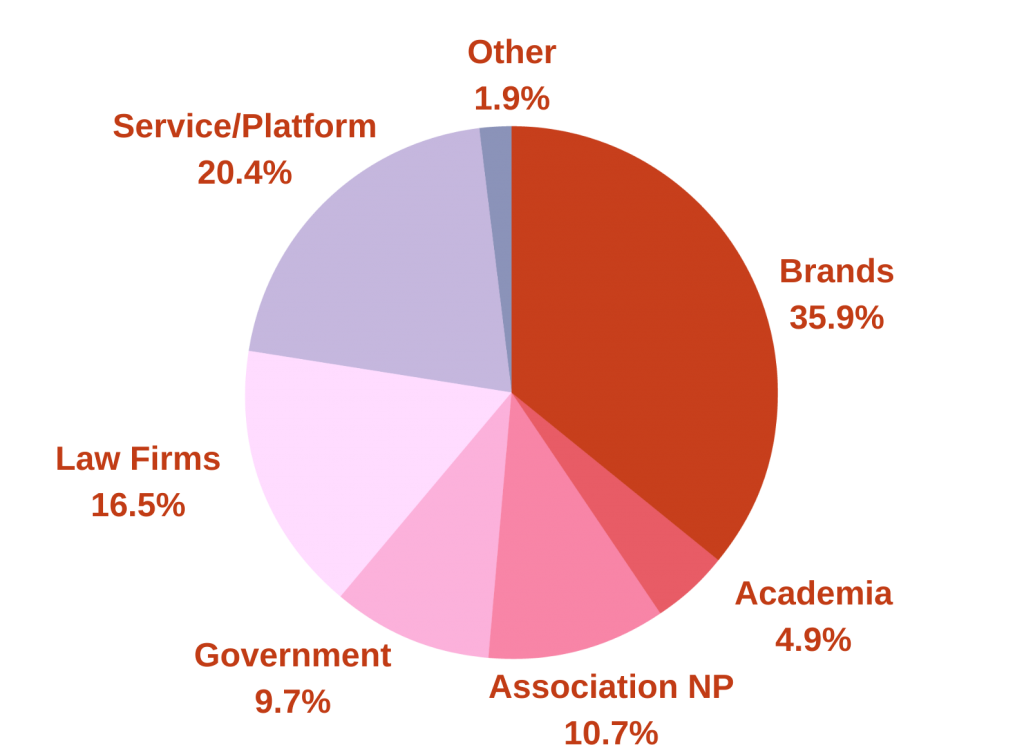
38 Brands in Attendance
Abbott
Acushnet Company
Association Civil Anti Pirateria Argentina
Avaya
Avery Dennison RBIS
Bath & Body Works
Boehringer-Ingelheim
Bohning Co, ltd
Bristol Myers Squibb
Caterpillar
Cisco Systems
Corteva
Deere & Company
Dolby Laboratories
DuPont
Epson America, Inc.
Gymshark
HP Inc
Johnson & Johnson
Juul Labs
Lbrands
Louis Vuitton
Nike
Novartis
Pfizer
PMI
Sanofi
Schaeffler
Schneider Electric
Spectrum Brands, Inc.
Superdry plc
Syngenta
Takeda Pharmaceuticals
TechSmith Corporation
The LEGO Group
Unilever
Victoria’s Secret
THANK YOU
to all of our sponsors, partners, and speakers who helped us promote and organize the best event experience possible for our audience
Contributors/Moderators/Panelists
Working with Local Authorities to Address Counterfeiting: Strategies for Brands
Carolina González Aréchiga
Philip Morris International
Andres Diaz
CropLife Latin America
Arturo Ishbak Gonzalez
The LEGO Group
Jeff Schmidt
National IPR Center
Oliver Zopo
Merck
Free Trade Zones and Brand Protection: Best Practices
Kari Kammel
A-CAPP Center
Hernan Albamonte
Philip Morris International
Samir Hamrouni
World Free Trade Zones Organization
Fanta Punch
M. Hamel-Smith & Co.
Diego Farreras
LVMH
E-Commerce and Counterfeits: Transnational Cooperation
Jay Kennedy
A-CAPP Center
Juan Cichero
Mercado Libre
Emilio Daireaux
Under Armour
Fernando Casares
React
Overlap of Counterfeiting and Links to Organized Crime
Maria Osma Potes
A-CAPP Center Fellow
Juan Carlos Buitrago Arias
StrategosBIP
Carlos Augusto Chacon Monsalve
ICP Policy Lab
Sergio Piris
Argentine Civil Anti-Piracy Association
Custom Seizures of Counterfeit Goods: Follow Up, Destruction of Goods
Jeff Rojek
A-CAPP Center
Regina Zamith
Johnson & Johnson
Cesar Cabrera
IPR Center
Charlie Olschanksi
Tiffany & Co.
Virginia Cervieri
Cervieri Monsuarez
Impact of COVID-19 on Brand Protection and IP Enforcement in Latin America
Bruce Foucart
A-CAPP Center Fellow
Julie Mejia
Proctor & Gamble
Christopher Macolini
MIC Worldwide
Breno Araujo
Corteva
[1] OECD, Global Trade in Fakes: A Worrying Threat, 2021
[2] OECD, Recommendation of the Council on Countering Illicit Trade: Enhancing Transparency in Free Trade Zones, 2019
[3] HSS Review, World Free Zones Organization Launches Safe Zone Certification Programme, 2020
